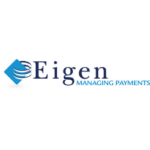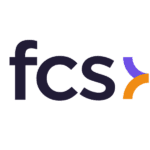The Hollywood film trailer provides an incredibly useful and effective blueprint for marketing.
It has to engage, entertain and inform its audience – encouraging them to go out and buy tickets off the back of two minutes worth of footage. And it uses a range of powerful marketing tools to achieve this aim.
But Hollywood’s magic marketing formula isn’t a secret.
As a hotelier, you can actually replicate a whole range of elements from the movie trailer format to attract new customers.
Here are 6 essential tactics you can use today to supercharge your own hotel marketing.
1. Start with a bang
A movie trailer lasts around 2 and a half minutes. So there’s no time for waffle. It needs to instantly hook the audience’s attention from the get-go, otherwise they’ll be ducking out for popcorn and checking their Twitter feed in a heartbeat.
The importance of grabbing instant attention is equally applicable to your hotel marketing.
Whatever form of communication you’re using – the homepage of your website, newsletters, blog posts, email marketing campaigns – same rule applies. Instantly give people a reason to stick with you.
How can this ‘start with a bang’ mentality be specifically applied to your hotel marketing?
Well, if we’re talking about your website’s homepage, make sure you have a powerful headline to act as an immediate hook. Then encourage people to continue reading your content by crafting effective copywriting that leads them further into your site.
If it’s an email, crafting an irresistible subject line will help get the email opened. If it’s a blog post, the title and opening line needs to be snappy and engaging so people are enthused to read more.
2. Know your audience
Hollywood doesn’t play dice. Its trailers are tactically produced to hit the sweet spot of the intended target market. The speed of editing, the choice of scenes and the style of voice-over are all chosen with meticulous care.
As a hotelier, knowing your audience is just as essential. Defining your target market and tailoring your service to their needs and interests will ensure they instantly feel like you understand their world.
Once your customer profile is crystal-clear, you’ll want to craft a brand of effective hotel copywriting that uses the kind of language they use – that focuses on the kind of features they care about.
And there’s no need to try and second guess what these desired features might be.
Feedback forms, emails, social media and TripAdvisor reviews are great places to acquire this information.
You can then tailor your marketing to ensure you’re offering something genuinely valuable to the kind of guest you know is booking, using the kind of language they relate to.
3. Tell a story
Film trailers tell a story. Even if it’s a familiar one, their job is to say “hey, here’s a slant on life you haven’t seen before.” They’re the dangling carrot that persuades you the full feature really is worth seeing.
Your hotel also has its own story to tell. To find out what that is, you need to drill down into what makes you unique. What makes your hotel different from the competition? Answering this question is integral to helping you craft your story, or in more technical terms, your value proposition.
How you produce a value proposition is a post in itself, but in essence it involves communicating your most unique and attractive qualities with the needs and desires of your audience in mind.
Crucially, it has the ingredients of a great story – building intrigue and a promise of something valuable that’s worth sticking around for.
To see this idea in action, here’s a great example of how boutique hotel Jamaica Inn tell their story through their website. They realised their most attractive features were their ocean-view rooms and intimate, distraction-free environment.
So, that’s what they focus on.
Their homepage really sells the beauty of those gorgeous ocean views with a series of captivating images.
The bold headline and focused, descriptive copywriting then brings to life the sense of privacy, escapism and lack of distraction guests can expect from their stay.
It’s uncluttered, simple and incredibly inviting. And this messaging can be seen in all of Jamaica Inn’s marketing including newsletters, customer emails and social media.
Think about the unique story you want to tell and make it the heart and soul of your messaging.
4. Sensory stimulation
The base-thumping soundtrack, the bombardment of images, the spine-tingling narration. Great movie trailers use every trick in the book to stimulate our senses.
In the same way, you should strive to help people imagine and feel what it’s like to live the experience you’re selling.
Using a combination of emotion-rich adjectives and engaging images, you can stimulate your customers’ senses, sweeping them along on a mental journey. But to truly ramp up the impact, you’re going to want to invite people into this world.
So, if you have particular standout facilities you want to highlight, relate them to how the customer can benefit. Try to place them in the heart of the scene.
If your incredibly comfortable hotel beds are worth raving about, you could use this tactic in the following way:
“Let your head sink into our cloud-soft Egyptian cotton pillows and enjoy the most relaxing night’s sleep imaginable.”
You don’t want to overdo this kind of language. But used in the right way, vivid hotel copywriting can heighten emotional response. And just like a great movie trailer, it’ll describe a story that an audience can relate to.
5. Critical acclaim
Movie trailers are quick to tell you if they’ve received a great review or been lavished with awards. Outside recognition says, “hey, it’s not just us studio execs who think this movie’s pretty awesome, look who else loves it!”
For your hotel, quality customer testimonials are kind of like the equivalent of an Oscar nomination or five-star review from a prominent critic. They act as a form of social proof that adds credibility and trust in what you’re telling people.
If you have a few glowing testimonials or awards, make sure they feature prominently on your website.
Guest surveys, feedback forms and social media posts can all provide content for a great review.
And there’s no harm in mentioning any awards or recognition you’ve received in a newsletter or blog update. Just try to keep the focus on your customer, telling them how any recognition of your service translates into benefits for them.
6. Keep it simple
The beauty of a film trailer is its ability to summarise two hours of content in two minutes. So, while it undoubtedly needs to entertain the pants off the audience, its most important job is to make sure everyone completely gets what the full movie is all about.
This is a great lesson for hotel copywriting. Because while you absolutely want to set an impressive image, it shouldn’t be at the expense of clarity.
For example, including too much copy on your website or listing everything that’s great about the service you offer can backfire if it looks like a whole lot of effort to read.
The key to making this work? Balance desire with information.
Create compelling copywriting and avoid throwing irrelevant plot points that might lose your audience’s interest.
When you get this balance right, your customers will be more likely to stay fully engaged with your content from start to finish.


















